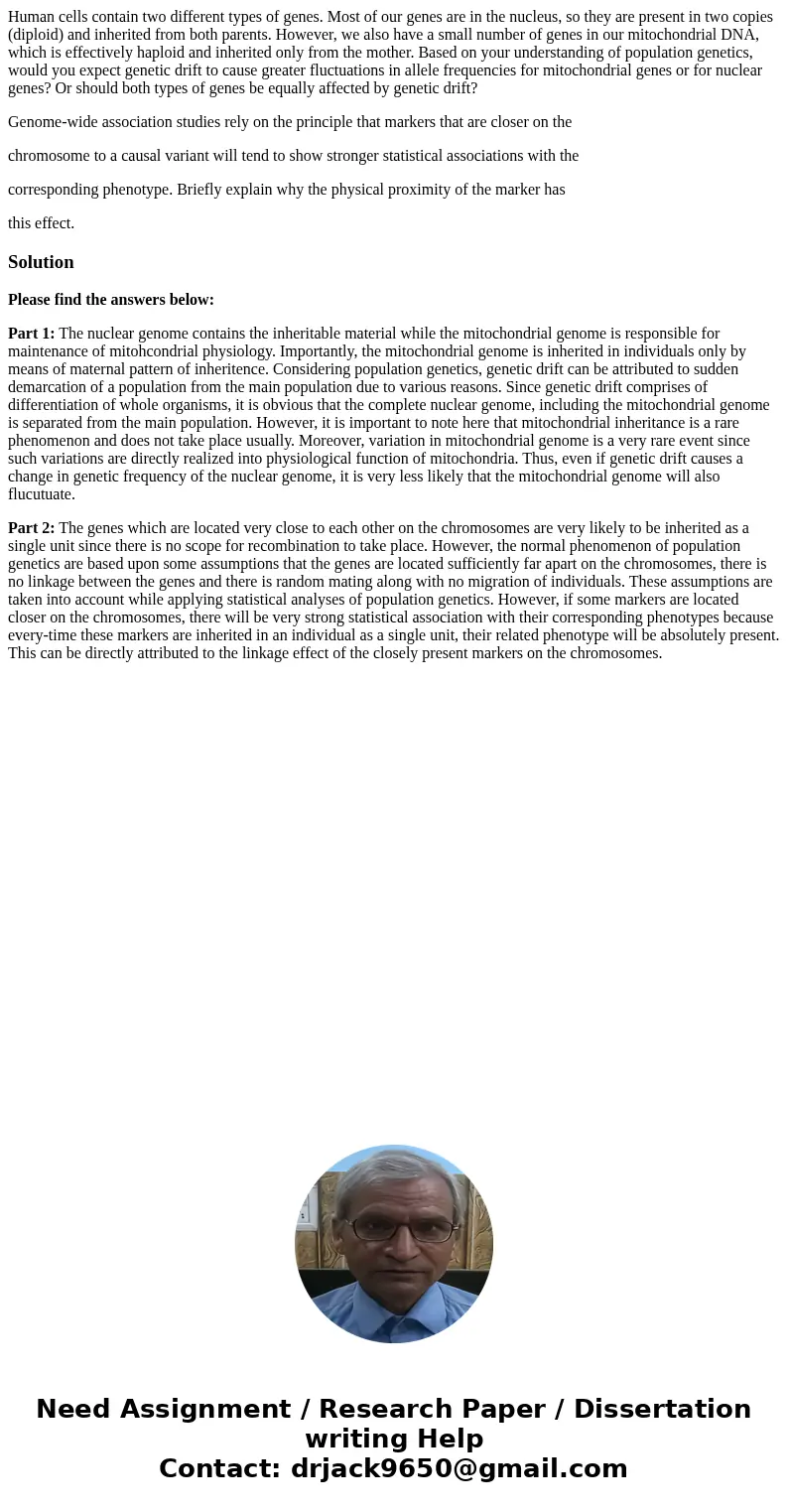Human cells contain two different types of genes Most of our
Human cells contain two different types of genes. Most of our genes are in the nucleus, so they are present in two copies (diploid) and inherited from both parents. However, we also have a small number of genes in our mitochondrial DNA, which is effectively haploid and inherited only from the mother. Based on your understanding of population genetics, would you expect genetic drift to cause greater fluctuations in allele frequencies for mitochondrial genes or for nuclear genes? Or should both types of genes be equally affected by genetic drift?
Genome-wide association studies rely on the principle that markers that are closer on the
chromosome to a causal variant will tend to show stronger statistical associations with the
corresponding phenotype. Briefly explain why the physical proximity of the marker has
this effect.
Solution
Please find the answers below:
Part 1: The nuclear genome contains the inheritable material while the mitochondrial genome is responsible for maintenance of mitohcondrial physiology. Importantly, the mitochondrial genome is inherited in individuals only by means of maternal pattern of inheritence. Considering population genetics, genetic drift can be attributed to sudden demarcation of a population from the main population due to various reasons. Since genetic drift comprises of differentiation of whole organisms, it is obvious that the complete nuclear genome, including the mitochondrial genome is separated from the main population. However, it is important to note here that mitochondrial inheritance is a rare phenomenon and does not take place usually. Moreover, variation in mitochondrial genome is a very rare event since such variations are directly realized into physiological function of mitochondria. Thus, even if genetic drift causes a change in genetic frequency of the nuclear genome, it is very less likely that the mitochondrial genome will also flucutuate.
Part 2: The genes which are located very close to each other on the chromosomes are very likely to be inherited as a single unit since there is no scope for recombination to take place. However, the normal phenomenon of population genetics are based upon some assumptions that the genes are located sufficiently far apart on the chromosomes, there is no linkage between the genes and there is random mating along with no migration of individuals. These assumptions are taken into account while applying statistical analyses of population genetics. However, if some markers are located closer on the chromosomes, there will be very strong statistical association with their corresponding phenotypes because every-time these markers are inherited in an individual as a single unit, their related phenotype will be absolutely present. This can be directly attributed to the linkage effect of the closely present markers on the chromosomes.

 Homework Sourse
Homework Sourse